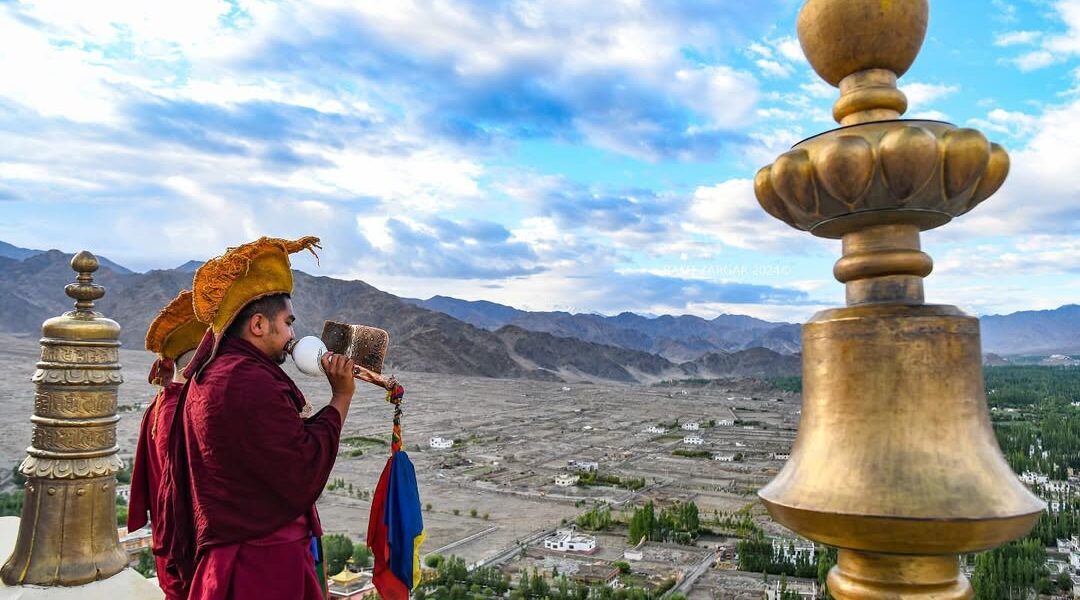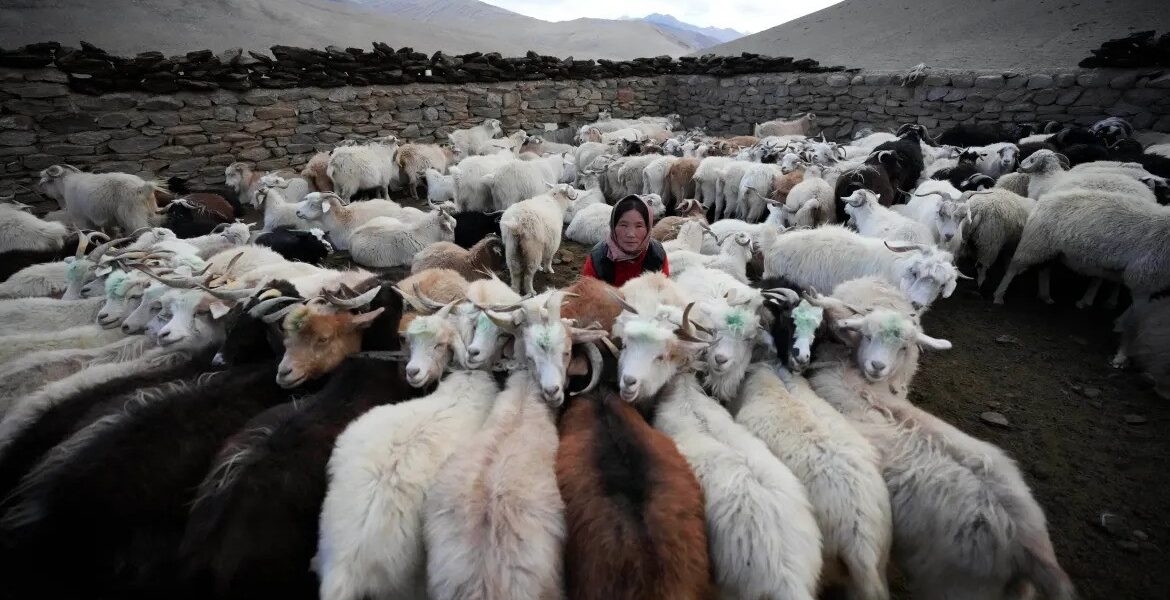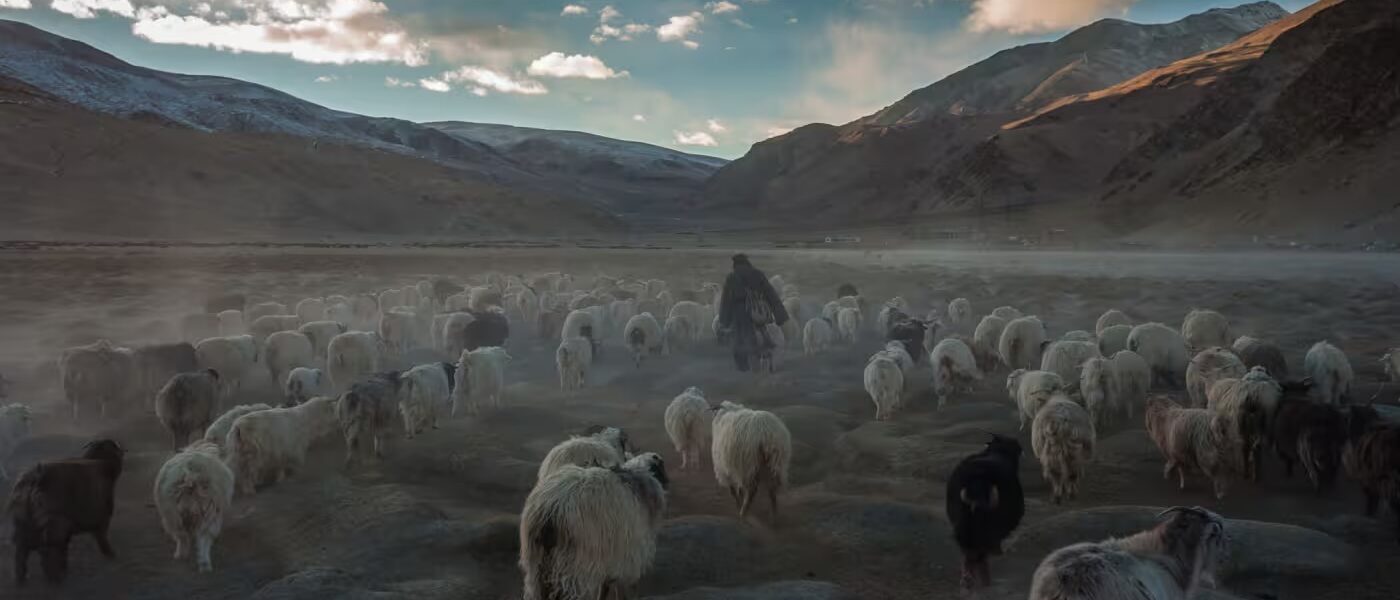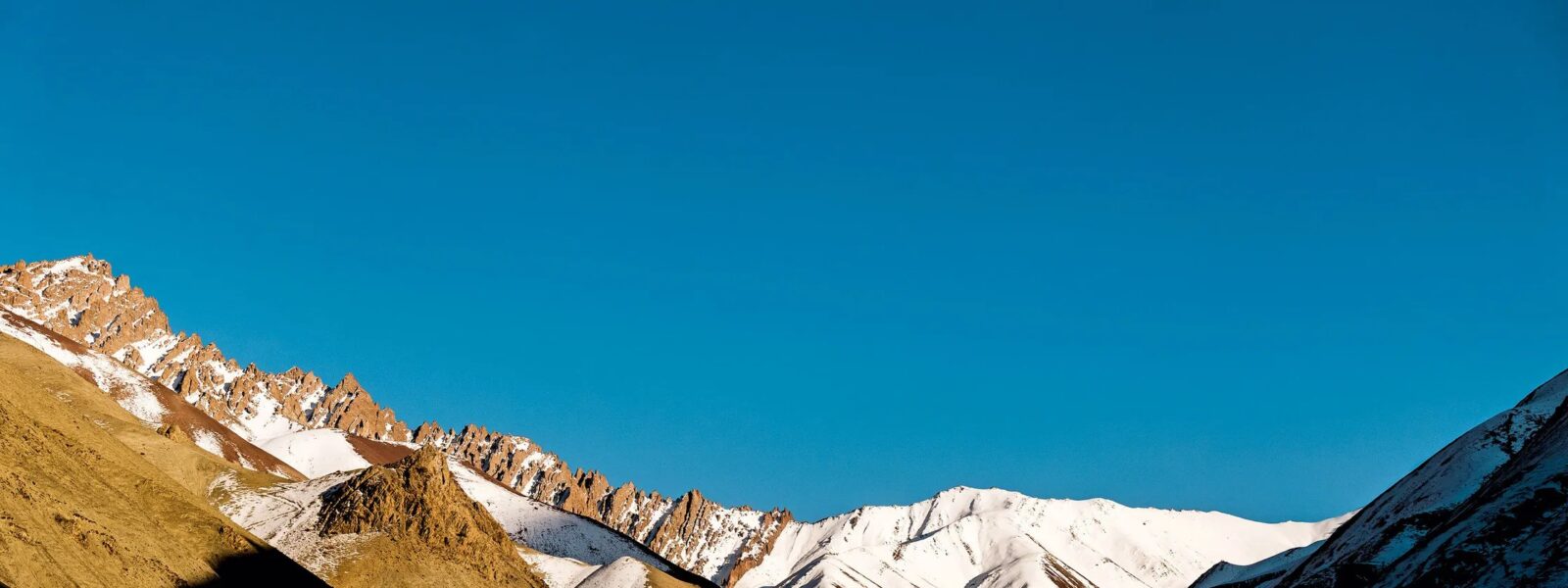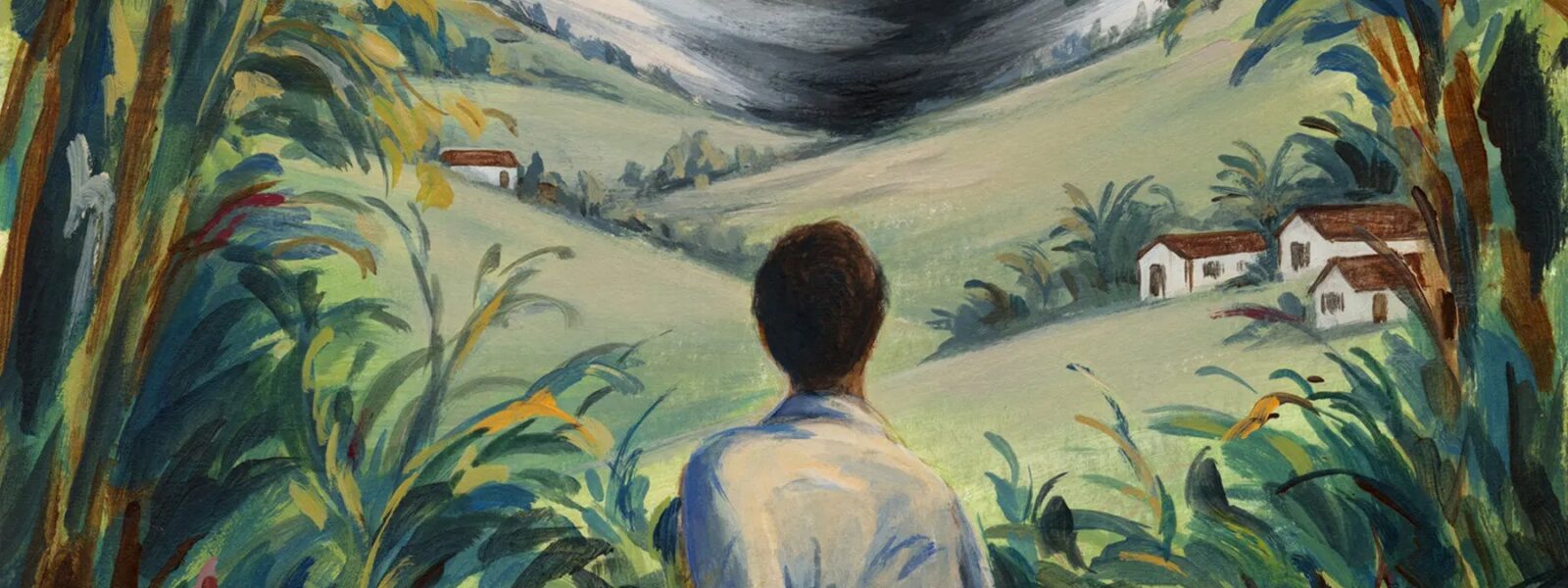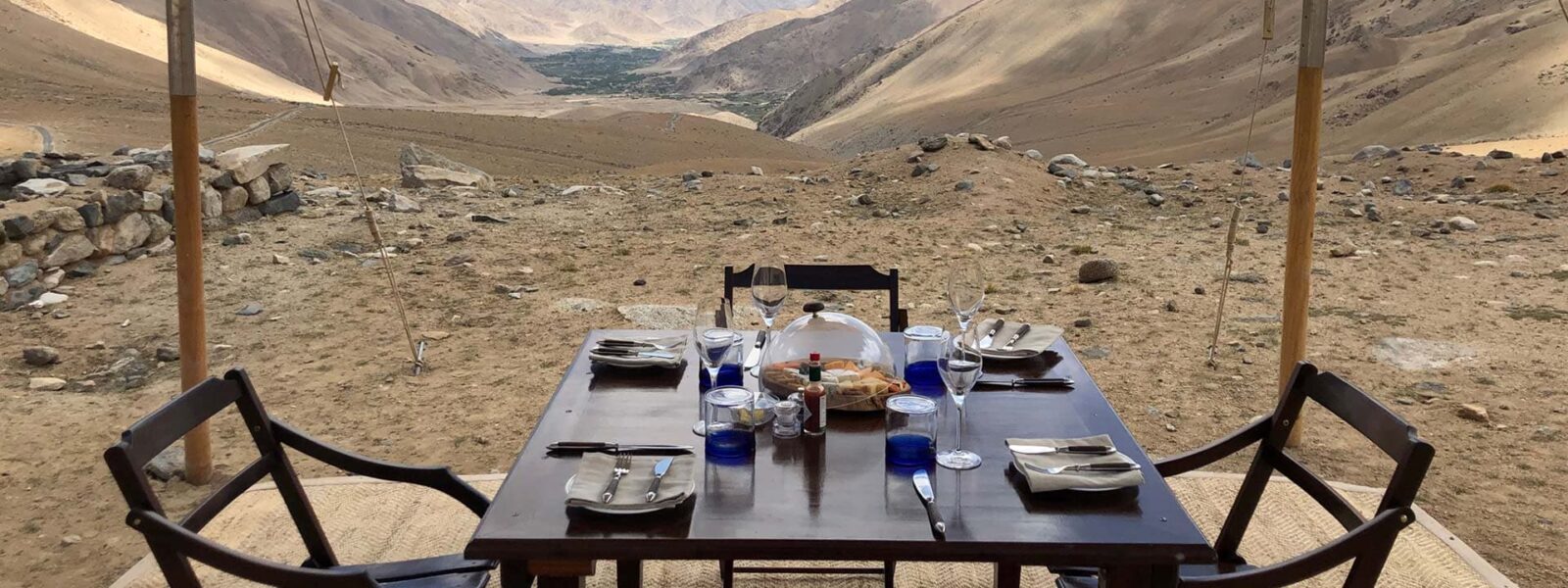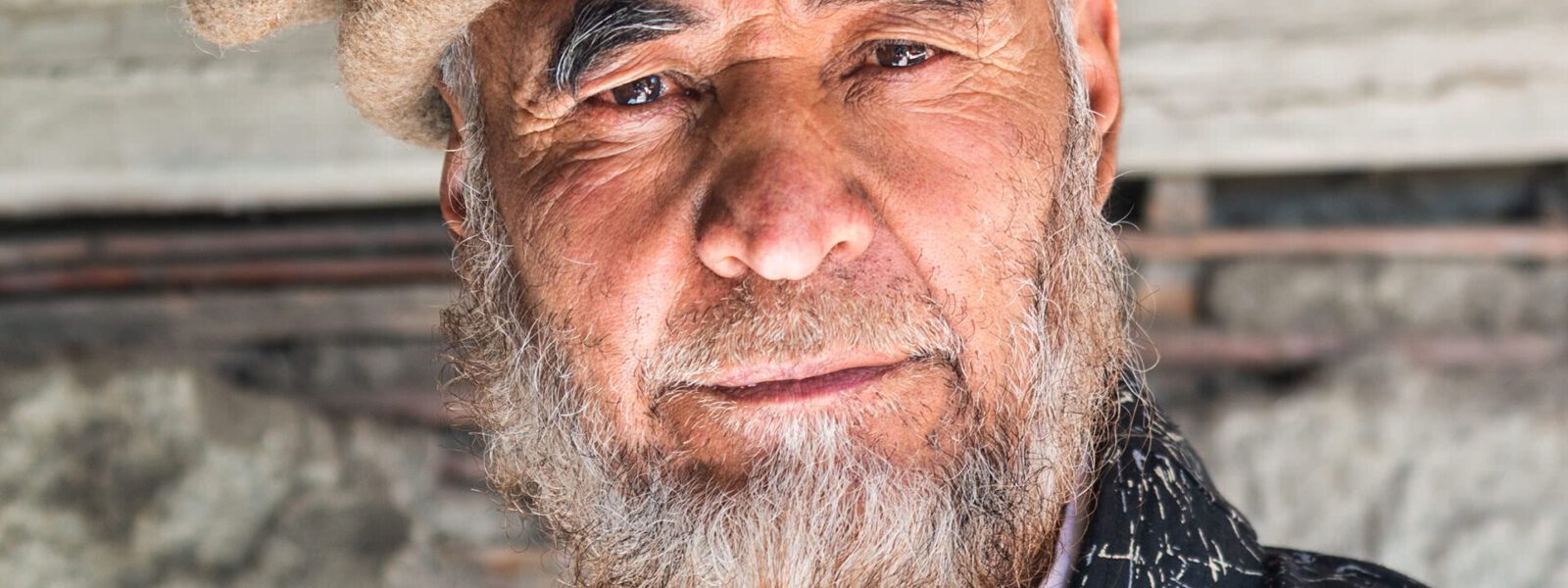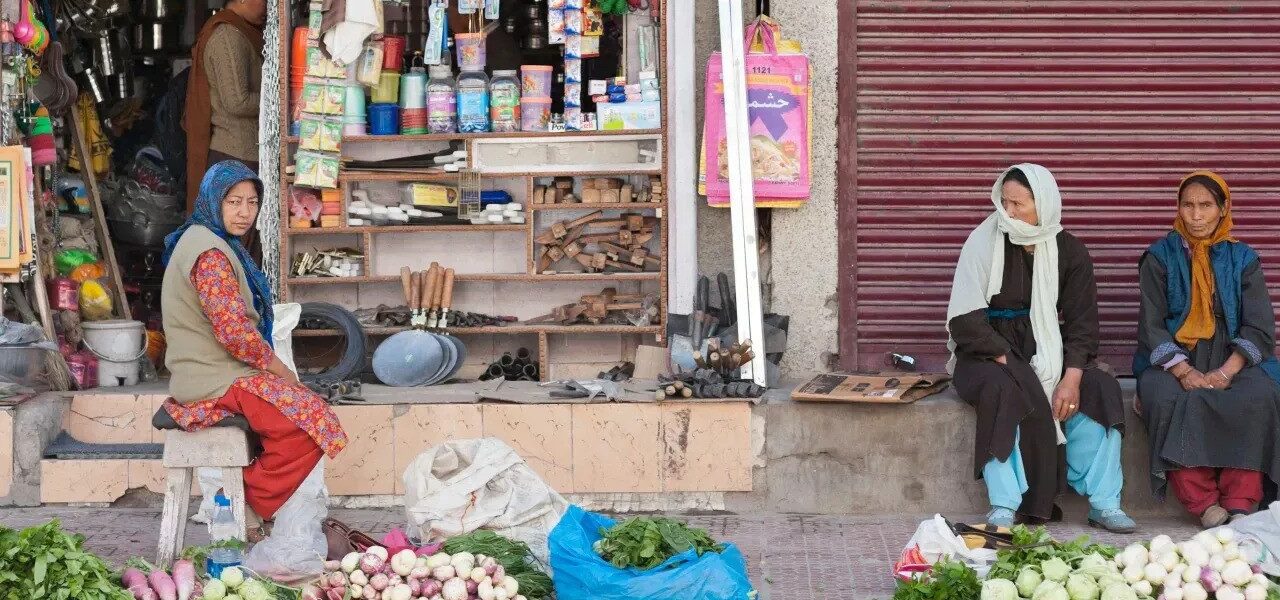Why Thiksey Monastery is Worth Waking Up For
As the sky over Ladakh begins to blush with the first light of day, a hush falls over the Indus Valley. The mountains, silent and ancient, witness a ritual that has been repeated for centuries. Thiksey Monastery, perched on a hilltop like a whitewashed sentinel, comes alive with the soft murmur of morning chants. There is no rush here. Just rhythm. And a sense of timelessness that clings to the cold air like incense.
Thiksey Monastery is not just a place to see — it is a place to *feel*. A place where time slows, where every breath of mountain air carries whispers of prayers that have echoed through these halls for generations. While Ladakh is filled with majestic gompas, Thiksey stands out as a living, breathing heart of Tibetan Buddhism in the region. Located just 18 kilometers from Leh, it is one of the largest and most architecturally stunning monasteries in Central Ladakh, often drawing comparisons to the Potala Palace in Lhasa.
The structure rises in layers up the hillside, a cascade of white walls and golden rooftops glowing at dawn. As you climb higher, you’re not just ascending in altitude — you’re being gently pulled into another world. Each level unveils more of its sacred soul: prayer halls, shrines, living quarters, and a towering statue of Maitreya Buddha that seems to gaze straight into your spirit.
Yet what makes Thiksey truly unforgettable isn’t its silhouette on the horizon — it’s the experience of joining the monks for their early morning prayers. Before the sun breaks free from the mountain ridges, the monastery’s ancient halls fill with the sound of deep-throated chanting. The vibrations seem to awaken not just the building, but something dormant within the visitor.
This is not just sightseeing. It’s a quiet invitation into a sacred rhythm, a rare chance to step beyond the boundaries of travel and into a spiritual moment that locals have treasured for centuries. For those searching for authenticity in their journey, attending morning prayers here offers something no itinerary or map can mark — stillness, awe, and a glimpse of devotion in its purest form.
So yes, Thiksey is worth waking up for. Not because it’s famous. Not because it looks good in photographs. But because in a world of noise, it gives you a rare and gentle silence. One that lingers long after you leave the hill behind.
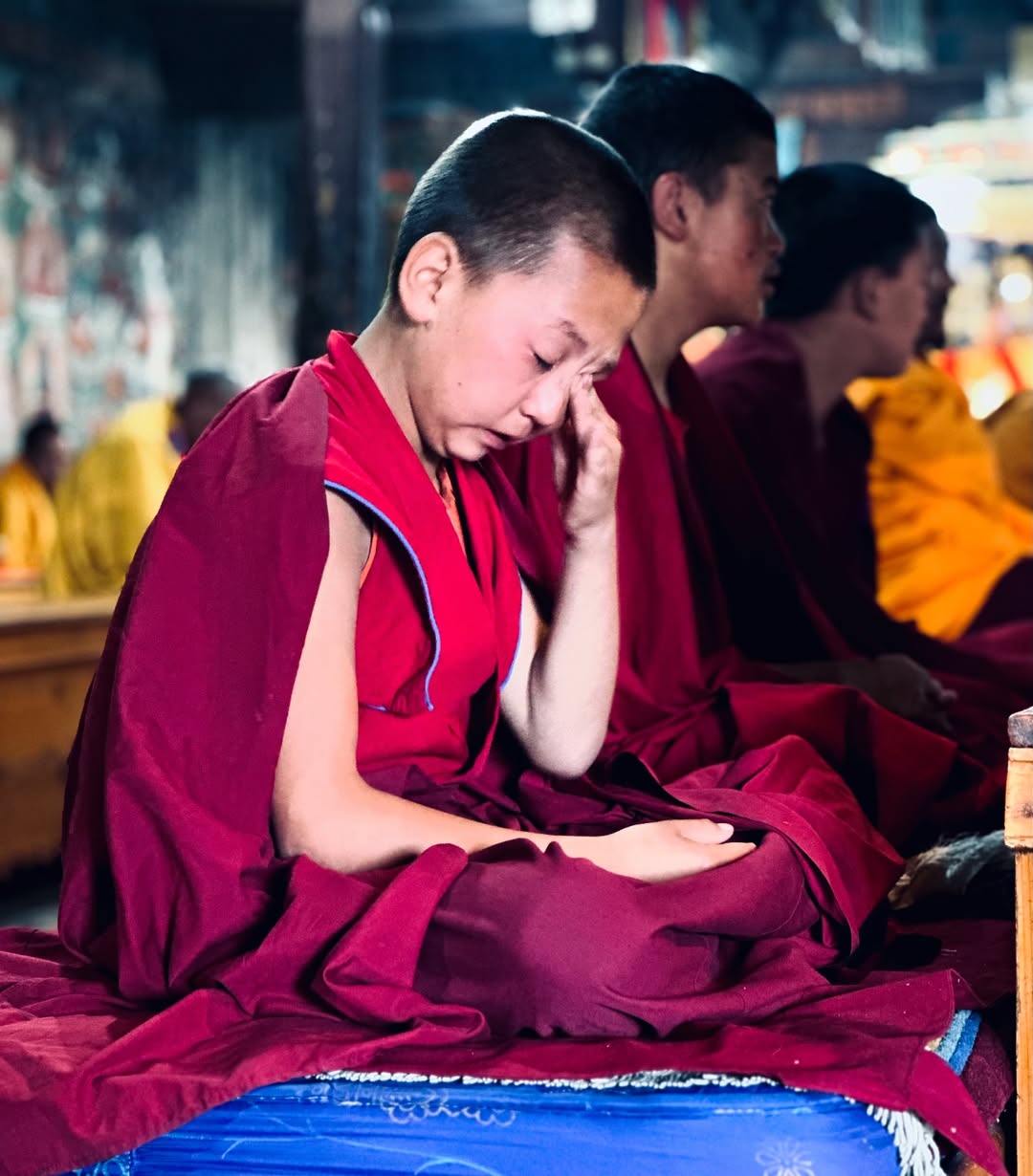
The Call of Dawn – A Journey Begins Before Sunrise
It begins in darkness. Not the darkness of fear or the unknown, but the kind that holds promise — like the velvet hush before an orchestra begins. In Ladakh, the stars are still scattered across the sky when you step out of your guesthouse and into the crisp, predawn air. There’s a chill that bites gently at your skin, but the silence wraps around you like a blanket. The journey to Thiksey Monastery has already begun.
The road to Thiksey from Leh is quiet at this hour, snaking through sleepy villages and frost-tipped fields. It’s only 18 kilometers, but with every turn, you seem to travel further from the modern world and deeper into something timeless. Occasionally, you might spot a shepherd already out with his sheep, or a woman drawing water before the morning light fully arrives. Life in Ladakh starts early — and so does the spirit.
As your car approaches the hill where Thiksey Monastery clings to the earth, you see its silhouette against the horizon — a layered crown of white walls slowly being inked with light. The stillness is profound. It’s not just the absence of sound, but the presence of something greater. A sacred anticipation that even the wind respects.
Arriving before sunrise is essential. The monks rise before the sun, and their prayers begin as the first golden rays stretch across the valley. The monastery gates creak open softly, as if not to disturb the spirits of the night. You remove your shoes, your steps echoing softly in the stone corridors. The scent of juniper smoke greets you. Butter lamps flicker like stars held in bowls. Somewhere deeper within, the first low notes of chanting begin.
There is no guide here, no loud announcement or schedule pinned to a board. You follow instinct and reverence. A novice monk in maroon robes nods silently, gesturing toward the prayer hall. Inside, the world changes. The outside disappears. You sit quietly, grateful not just to witness, but to simply be.
This is the beginning of your day — not with a checklist, but with a breath of something sacred. And once you’ve experienced this kind of morning, it’s difficult to return to ordinary timekeeping. In Thiksey, sunrise doesn’t just light the sky. It awakens something in you.

Witnessing the Morning Prayers – Stillness, Chanting, and Tea
Inside the prayer hall, the world is wrapped in shadow and amber light. Butter lamps glow like ancient stars, their flames trembling with each shift of the air. You settle on a low cushion along the side wall, trying not to disturb the rhythm that has already begun. In front of you, rows of monks sit cross-legged, backs straight, voices united in a chant that seems older than the mountains themselves.
The sound is not loud. It is deep — resonant — vibrating through your chest like a slow heartbeat. The chants are in Tibetan, words unfamiliar to you, yet their meaning is somehow understood. Not in the mind, but in the body. This is not a performance. This is devotion made audible. Some monks keep their eyes closed. Others gently turn prayer beads between their fingers. Incense floats upwards in slow spirals, curling like breath toward the ceiling beams.
Every so often, a young monk walks along the rows, pouring tea into metal bowls. The scent is unmistakable — rich, earthy, salty. It’s butter tea, or gur gur cha, made from yak butter, salt, and strong brewed tea leaves. To the uninitiated, it might seem strange. But in this moment, wrapped in chanting and silence, it becomes something more. A ritual of nourishment, a gesture of community.
You are not Buddhist. You are not from here. And yet, sitting there — sipping the warm, oily tea, listening to the deep chants rise and fall — you feel welcomed. There are no words exchanged. No explanations given. But everything makes sense. Not as information, but as experience.
The prayer session continues for over an hour. Time becomes soft, like snow. Occasionally, a conch is blown, echoing off the walls. A long trumpet sounds, low and majestic. The instruments, the chants, the flicker of flame — all of it weaves into a tapestry of sound and silence that leaves you hushed, stilled, and strangely cleansed.
And then, as naturally as it began, the ceremony concludes. Monks file out in quiet steps. The hall empties. You remain for a few extra breaths, reluctant to reenter the ordinary world. You came to observe. But you leave transformed. In a place so distant from your own life, you have found a form of intimacy — not with people, but with presence.
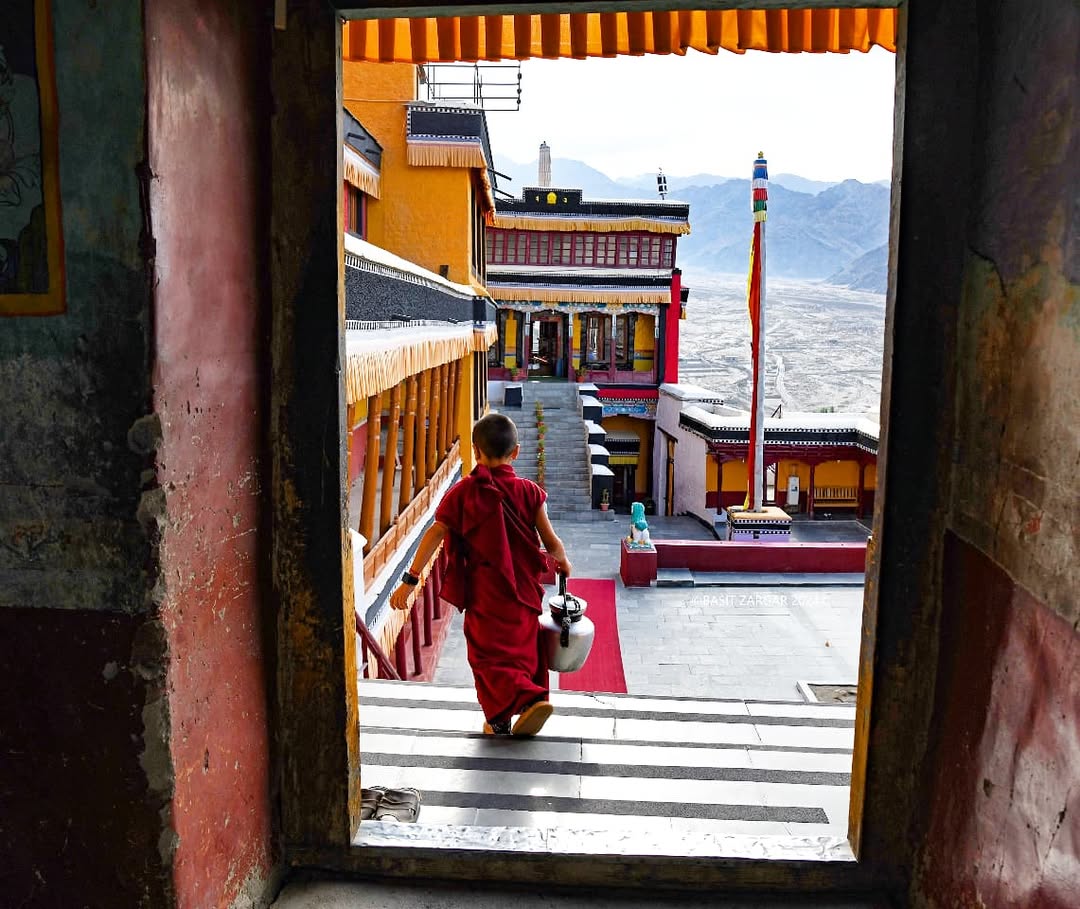
How to Respectfully Participate as a Visitor
In a world eager for “authentic experiences,” it’s easy to forget that sacred places are not tourist attractions — they are homes of faith. At Thiksey Monastery, this becomes beautifully evident. You are not merely stepping into a building; you are stepping into someone else’s spiritual rhythm. And that calls for more than admiration. It calls for respect.
Before entering the prayer hall, remove your shoes. Not in haste, but in awareness — as if you’re placing your ego at the door. Dress modestly: long trousers, covered shoulders, soft colors if possible. No one will scold you for wearing bright red, but you may find that muted tones blend better into the gentle reverence of the space.
When you sit, choose a spot along the edges. The central rows are reserved for monks. Do not cross your legs with the soles of your feet facing the altar or statues. In Buddhist cultures, feet are considered the lowest part of the body — both physically and spiritually. To point them toward the sacred is unintentionally offensive.
If you wish to take photographs, do so only after seeking permission. And even then, do it quietly. Monks in prayer are not subjects for spectacle — they are living vessels of a tradition far older than the lens you carry. Sometimes, the most powerful souvenir is the one you don’t take.
Try to remain silent throughout the ceremony. No whispering, no phone screens lighting up. Just your breath, and their chanting. And if your legs fall asleep, take a moment to gently shift, but avoid unnecessary movement. The stillness of others is a shared gift — don’t be the one to interrupt it.
Lastly, understand that your presence is a privilege, not a right. Not all travelers are offered this window into Ladakhi monastic life. Your reverence is your ticket, your silence is your way of saying thank you. In doing so, you become not just a witness, but part of the moment itself.
To attend morning prayers at Thiksey is to visit a world that does not ask you to belong, only to listen. And in listening — truly, humbly — you may discover that the monastery gives more than it takes. Not through explanation, but through presence.
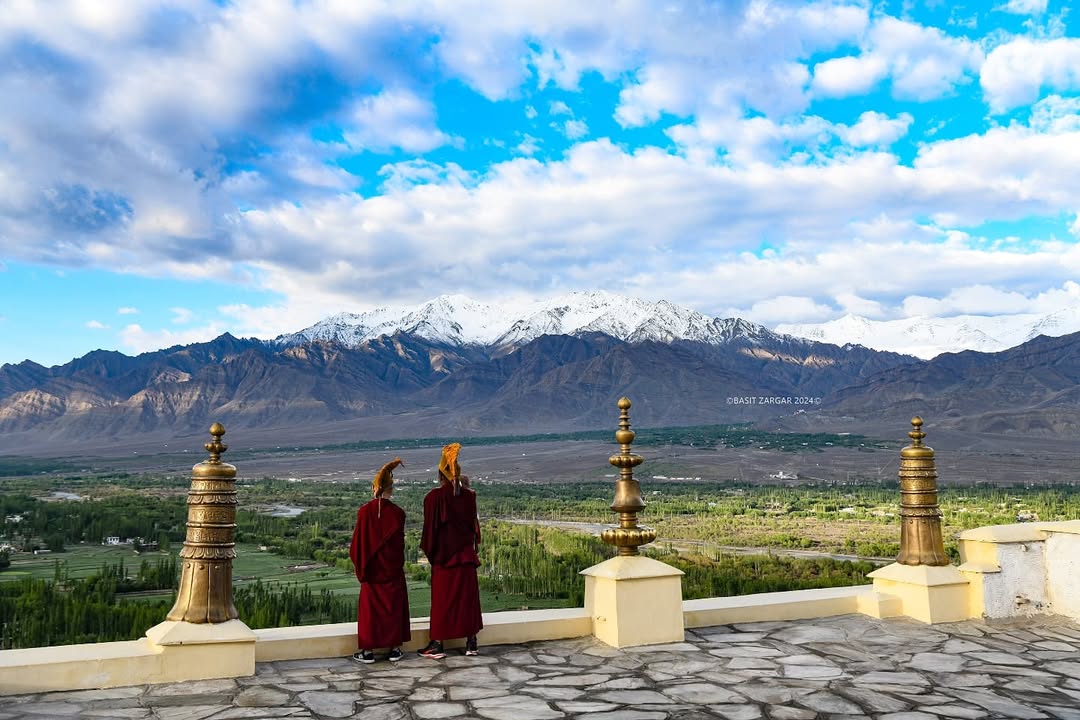
After the Prayers – Let the Day Unfold in Stillness
As the last echoes of the chants fade into the monastery walls, and the deep hum of the ceremonial conch grows still, you may find yourself unsure of what to do next. That is the beauty of it. There is no itinerary waiting. No checklist. Only the invitation to linger.
Wander slowly through the monastery’s upper courtyards. With the prayers complete, the halls are quieter, the monks dispersing to their daily routines. You’ll likely pass novices carrying buckets of water, or elderly monks sweeping with straw brooms — their movements as graceful as their mantras. No one rushes here. Even the sun climbs lazily above the Himalayas, painting the whitewashed walls in gold.
Climb to the rooftop. From there, the entire Indus Valley opens up like a silent scroll. You’ll see distant villages tucked between poplar trees, prayer flags fluttering in invisible wind currents, and rows of barley fields catching the morning light. It’s a view that reminds you how small we are, and how wide the world still is.
Take time to visit the monastery’s towering Maitreya Buddha, whose calm gaze seems to extend beyond time. Or sit in the quiet courtyard with a cup of tea if offered, and let your thoughts be still. Sometimes, the most profound part of a spiritual experience happens not during the ritual, but in the silence that follows.
There’s also a small monastic school on the premises. If you’re lucky, you might catch the sound of young monks reciting texts in unison — a reminder that tradition here is not frozen in stone, but passed breath to breath, from elder to child.
No one will rush you to leave. But eventually, the hum of life from the road below will return. Drivers starting their engines. Tourists arriving for a quick photograph. The spell may begin to loosen. And yet, something in you has shifted. Not in the dramatic way we often expect transformation, but like a subtle re-tuning of the spirit. A soft awakening. A breath you didn’t know you were holding.
When you descend the monastery steps and return to the valley floor, you carry that stillness with you. It doesn’t matter if you believe in Buddhism or not. What matters is that, for a moment, you touched something eternal — and it touched you back.
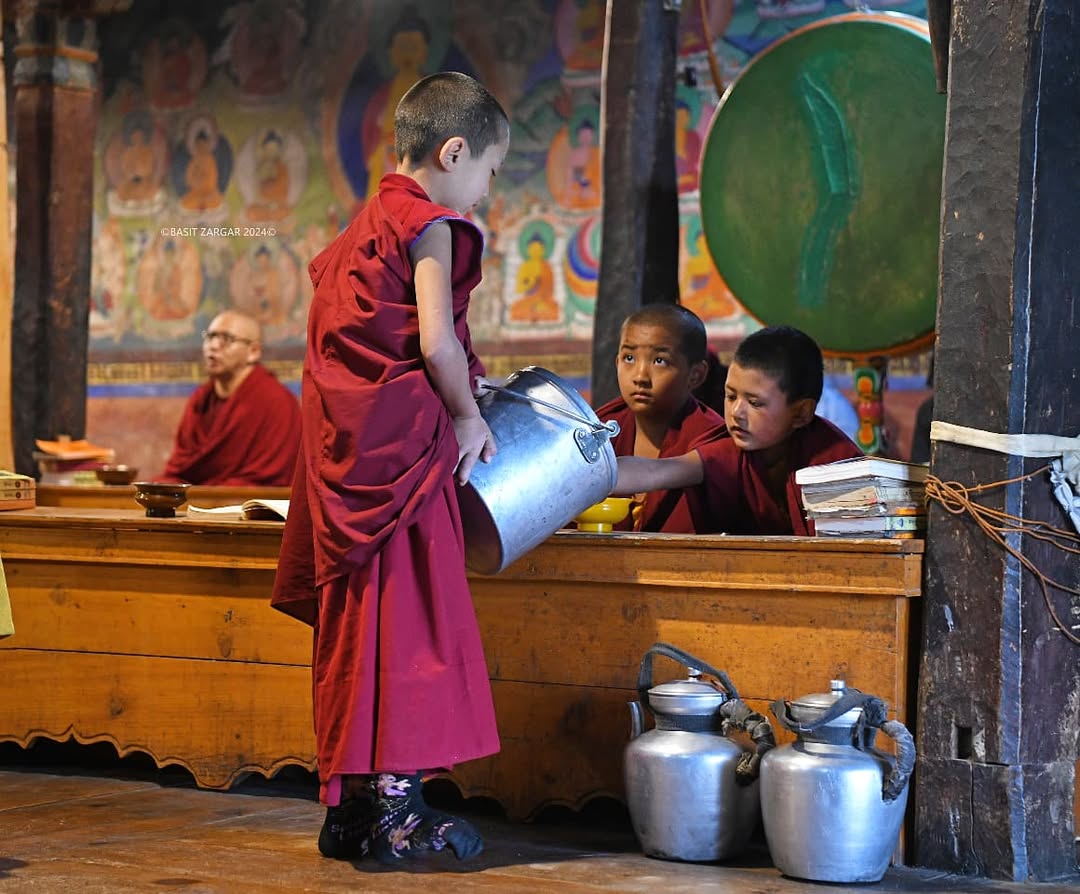
Planning Your Visit to Thiksey Monastery
To truly experience the morning prayers at Thiksey Monastery, a little planning goes a long way. While much of Ladakh invites spontaneity, this particular encounter rewards the prepared traveler — the one willing to rise before dawn and walk gently into sacred time.
Thiksey Monastery is located approximately 18 kilometers southeast of Leh, easily accessible by car or taxi. The drive takes about 30 to 40 minutes depending on road conditions. If you’re staying in Leh, arrange your transport the night before. Most drivers are familiar with the prayer schedule and will arrive at your guesthouse early, ready to escort you under the quiet sky.
Morning prayers typically begin between 5:30 and 6:00 AM, depending on the season. There is no official ticket for the prayers, and no need to make a booking — but arriving on time, respectfully dressed, and with an open heart is essential. Be sure to confirm the timing locally, as monastic schedules may shift during festivals or specific lunar dates.
The best months to visit Thiksey for this experience are between May and October. During these months, the roads are open, the weather is stable, and the high-altitude sun offers golden mornings with breathtaking clarity. Winter brings a different kind of beauty, but access becomes more limited and the bitter cold may not be suitable for early visits.
For accommodation, Leh offers a wide range of guesthouses and boutique stays, from traditional Ladakhi homestays to modern eco-lodges. If you seek a quieter atmosphere, consider staying in or near Thiksey village itself. While options here are more limited, you’ll be closer to the monastery, allowing for a more seamless early morning arrival and a deeper immersion into the local rhythm.
Remember: altitude affects everyone differently. Leh sits at over 3,500 meters, and Thiksey is slightly higher. Give yourself at least a day or two to acclimatize upon arrival in Ladakh. Stay hydrated, eat light, and rest well before your morning adventure. The monastery will wait for you — there is no need to rush.
Finally, it’s worth asking your host or hotel about current cultural events at Thiksey. You may be lucky enough to visit during a local festival or receive an invitation to a special ceremony. And even if not, the morning prayers alone are more than enough to leave a lasting impression.

Final Thoughts – More Than a Morning, a Memory
There are some moments in travel that never quite leave you — not because of their grandeur, but because of their gentleness. Attending the morning prayers at Thiksey Monastery is not the kind of experience you brag about at dinner parties. There are no adrenaline-fueled stories or wild escapades. And yet, it settles inside you with the quiet permanence of a whispered blessing.
Long after you return to your world of train schedules, office lights, and crowded cafés, you might find yourself remembering the warmth of butter tea in your hands, the low hum of monks in unison, the soft glow of a butter lamp at dawn. In the middle of an ordinary day, the memory may rise like incense — unexpected, soothing, and grounding.
Because what you witness at Thiksey is not a performance, nor a cultural show put on for travelers. It is daily life. A sacred rhythm uninterrupted by tourism. And your role in it is not as a spectator, but as a humble guest — briefly invited into a world where time slows, and presence becomes prayer.
And so, when you tell someone you visited Ladakh, you might mention the high passes and the surreal moonscapes. But if you find yourself pausing, softening, and saying, “There was this morning… at a monastery…”, you’ll know. You’ll know that something real happened there. Something quiet. Something that asked nothing of you, except to listen.
That’s the kind of journey we all hope for — one that follows us home. Not in souvenirs, but in spirit. In a slightly slower breath. In a gentler gaze. In a silent knowing that somewhere, in the high Himalayas, the monks of Thiksey are still chanting. And maybe, just maybe, a part of you is still there, seated cross-legged in a prayer hall at dawn, listening to the world begin again.
About the Author
Elena Marlowe is an Irish-born writer currently residing in a quiet village near Lake Bled, Slovenia.
With a background in cultural anthropology and a lifelong passion for contemplative travel, she has spent the last decade exploring the highlands, monasteries, and remote communities of the Himalayas. Her writing blends immersive storytelling with spiritual observation, seeking out the quieter truths of a place — the kind you can only hear when you pause to listen.
Elena believes that the most profound journeys are not measured in miles, but in moments of connection — with people, with landscapes, and with the self. Through her columns, she invites readers to step beyond the guidebooks and into the heart of a place, where stories are whispered, not shouted.
When she is not writing, you’ll likely find her walking forest trails, sipping tea in high-altitude kitchens, or watching the way morning light moves across a temple wall.

